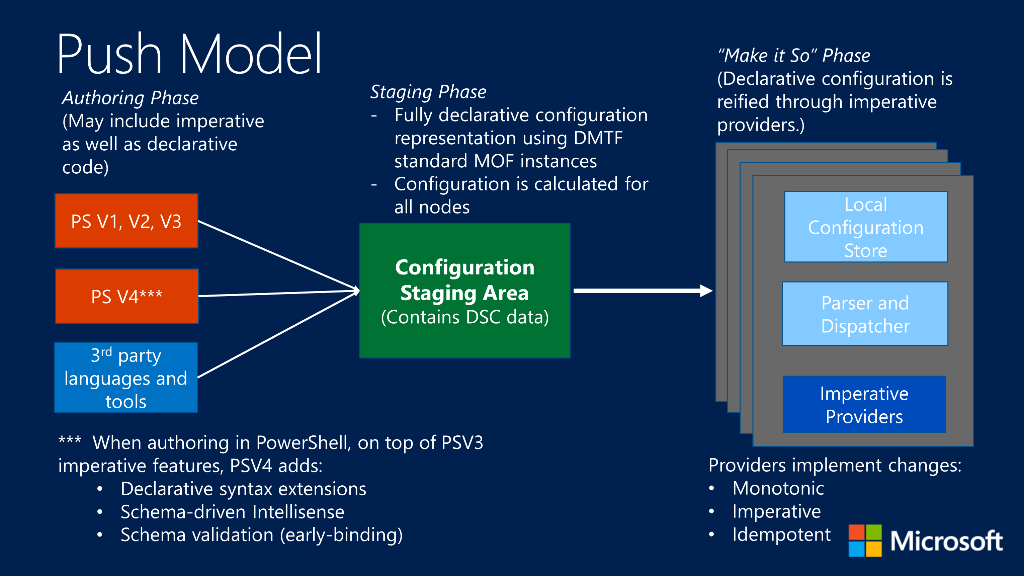Enacting configurations
Applies To: Windows PowerShell 4.0, Windows PowerShell 5.0
There are two ways to enact PowerShell Desired State Configuration (DSC) configurations: push mode and pull mode.
Push mode

Push mode refers to a user actively applying a configuration to a target node by calling the Start-DscConfiguration cmdlet.
After creating and compiling a configuration, you can enact it in push mode by calling the
Start-DscConfiguration
cmdlet, setting the -Path parameter of the cmdlet to the path where the configuration MOF is
located. For example, if the configuration MOF is located at C:\DSC\Configurations\localhost.mof,
you would apply it to the local machine with the following command:
Start-DscConfiguration -Path 'C:\DSC\Configurations'
Note
By default, DSC runs a configuration as a background job. To run the configuration interactively, call the Start-DscConfiguration with the Wait parameter.
Pull mode

In pull mode, pull clients are configured to get their desired state configurations from a remote pull service. Likewise, the pull service has been set up to host the DSC service, and has been provisioned with the configurations and resources that are required by the pull clients. Each of the pull clients has a scheduled event that performs a periodic compliance check on the configuration of the node. When the event is triggered the first time, the Local Configuration Manager (LCM) on the pull client makes a request to the pull service to get the configuration specified in the LCM. If that configuration exists on the pull service, and it passes initial validation checks, the configuration is downloaded to the pull client, where it is then executed by the LCM.
The LCM checks that the client is in compliance with the configuration at regular intervals specified by the ConfigurationModeFrequencyMins property of the LCM. The LCM checks for updated configurations on the pull service at regular intervals specified by the RefreshModeFrequency property of the LCM. For information about configuring the LCM, see Configuring the Local Configuration Manager.
The recommended solution for hosting a Pull Service, is the DSC cloud service, Azure Automation. This is hosted solution provides graphical management, reporting, and centralized administration.
For more information on setting up a Pull Service on Windows Server, see Setting up a DSC web pull server. Understand however, that this implementation has limited features and does require some "do it yourself" integration.
The following topics explain pull service and clients:
Feedback
Coming soon: Throughout 2024 we will be phasing out GitHub Issues as the feedback mechanism for content and replacing it with a new feedback system. For more information see: https://aka.ms/ContentUserFeedback.
Submit and view feedback for
